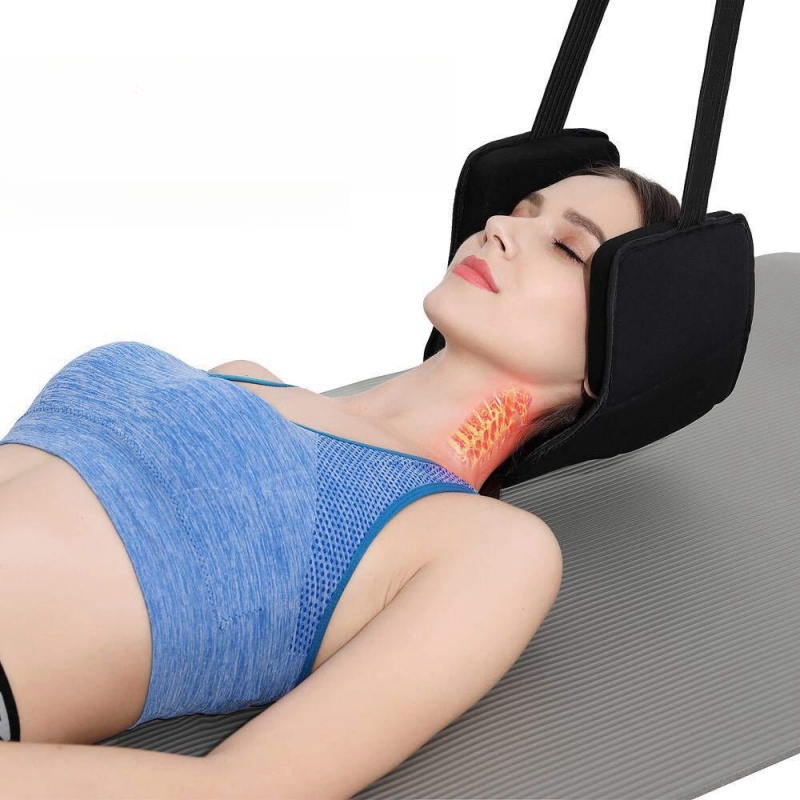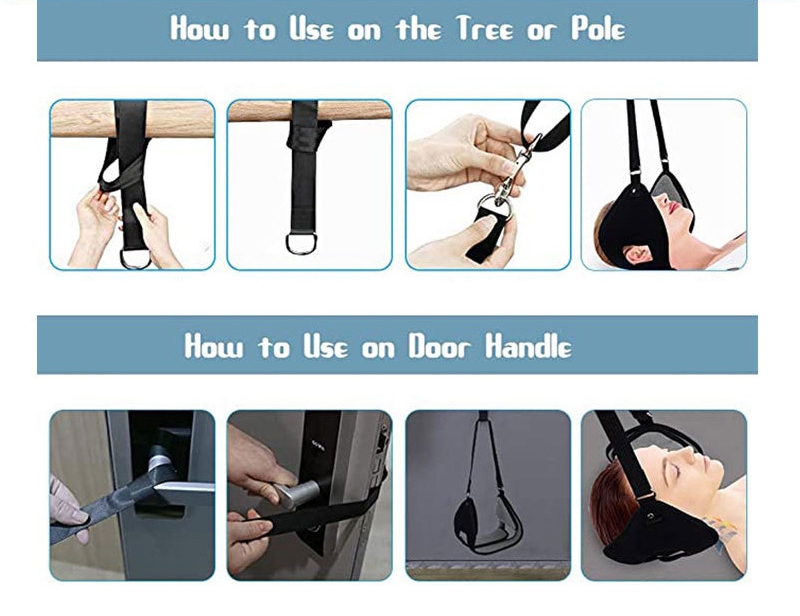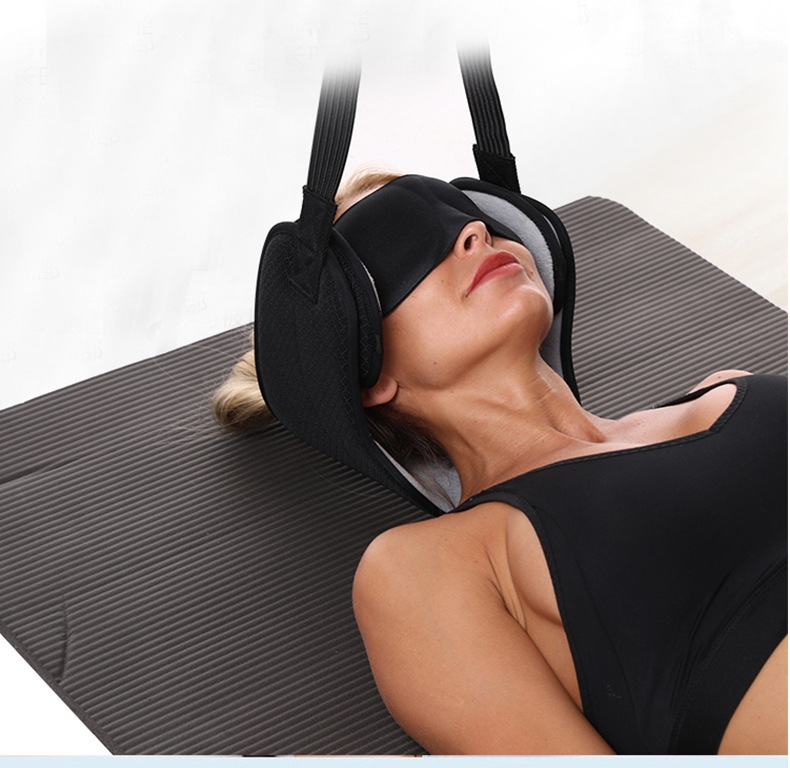
Keeping It Fresh: Maintenance and Cleaning Tips for Your Neck Hammock
Your Neck Hammock provides natural traction to decompress your spine and relieve neck pain. With regular use, it can give you years of relief. But

The Neck Hammock has become a popular solution for relieving neck pain and tension. But how does lying back in a hanging hammock provide such dramatic relief for so many people?
Understanding the science behind how the Neck Hammock works will help you use it for maximum benefit.

To understand how the hammock alleviates neck tension, we must first briefly review anatomy. The neck is a complex structure of vertebrae, discs, nerves, muscles, tendons, and ligaments that support the weight of the head and allow mobility.
The upper spine or cervical section consists of seven vertebrae labeled C1 to C7. These small vertebrae form the curves of the neck and surround the spinal cord. The atlas (C1) connects to the skull and the axis (C2) provides rotation allowing the head to turn.
The cervical vertebrae have several unique features that allow flexibility but also make them vulnerable to injury and degeneration:
Between each vertebra are discs consisting of a gel-like nucleus pulposus surrounded by a tougher annulus fibrosus. These discs provide cushioning, prevent friction, and bind the vertebrae together.
Layers of neck muscles and ligaments surround the spine providing support and mobility. Key muscles include the sternocleidomastoid and upper trapezius. Tightness in these muscles is a major source of neck tension.
The complex layers of muscle and connective tissue keep the neck functioning but are vulnerable to strain:
The spinal cord and nerve roots exit through the vertebrae to connect to the arms, shoulders and upper body. Compression of these nerves can cause radiating pain and numbness.
This complex anatomy allows our neck and head broad mobility but also makes it vulnerable to injury and degeneration. Understanding this structure gives us clues as to how the hammock helps.
To leverage the hammock, we must also examine what factors cause neck tension in the first place. Major causes include:
Slumping forward to use phones and computers pulls the head forward straining muscles and compressing vertebrae. This also creates rounded shoulders stressing the upper back.
Injury and aging degeneration lead to bulging, herniated or compressed discs. This narrows the spinal canal putting pressure on nerves.
Overuse and injuries like whiplash cause strained muscles which spasm painfully when aggravated. Trigger points form in muscles like the trapezius causing referred pain.
When stressed, people often tighten their neck muscles unconsciously. Tension accumulates causing pain and spasms.
Traction is the key to how the Neck Hammock provides relief from the root causes above. Lying back with the neck gently pulled provides both traction and stretching.
Spinal traction is a proven technique doctors use to take pressure off compressed vertebrae and discs. It provides space for herniated material to retract back into discs, reducing irritation of nerves.
With the hammock, gravity provides a sustained vertical traction pull to gently separate vertebrae, relieve disc compression, and take pressure off pinched nerves.
Here’s how it impacts key spinal structures:
The hammock provides a gentle stretch throughout the neck muscles and soft tissues. This releases over-tightness and spasms from strained muscles and trigger points.
Gentle stretching increases flexibility in the neck, shoulders, and upper back. Over time muscle tension is relieved.
Key soft tissue structures elongated include:
The weightless floating sensation of the hammock calms the mind-body system. The nervous system hyperarousal is soothed. This reduces unconscious tension and muscles can fully relax.
Ligaments relax, allowing vertebrae to slide back into proper alignment, easing pinched nerves and restabilizing the spine. The stretch can also gently realign the upper back and improve posture.
The traction component is key to relieving compressed nerves which the stretching alone cannot fix. But both elements are essential to release multiple causes of tension.

To leverage science fully, follow these best practices when using the Neck Hammock:
Following this protocol allows you to gently decompress the layers of cervical anatomy – vertebrae, discs, nerves, muscles, and joints. With patience and daily use, alignment is restored and tension melts away.
Based on science, here is an effective protocol for using the Neck Hammock to alleviate neck tension:
The gentle, natural traction of the Neck Hammock contrasts sharply with risky medical procedures also intended to decompress the neck.
Overly-aggressive mechanical traction devices are used in some clinics and chiropractic offices. But this forceful pulling can overstretch muscles and strain joints.
The Neck Hammock allows you to control the degree of traction yourself. And it decompresses by using your body weight in a natural position rather than mechanical force.
In severe cases of disc herniation, spinal fusion surgery may be recommended. But this highly invasive solution with a long recovery offers no guaranteed improvement.
The Neck Hammock is worth trying before considering the risks of surgery and permanent loss of mobility from fused vertebrae. It has helped many users avoid surgery.
Injecting steroids around irritated spinal nerves has risks of side effects. And evidence shows any pain relief is temporary as the underlying cause remains.
The Neck Hammock treats the root cause by continuously decompressing and realigning the spine. Relief can build over weeks and last for years.
Understanding science makes clear why properly using the Neck Hammock is a smarter first choice than medical procedures in many cases.

Now that you understand the anatomy and science of how neck tension develops and how the Neck Hammock alleviates it naturally, you can be fully confident in this solution.
Why leave your neck tight, painful and crooked? Use the power of spinal traction and stretching to gently realign your cervical spine and finally get lasting relief.
Your relaxed, happy neck awaits!


Your Neck Hammock provides natural traction to decompress your spine and relieve neck pain. With regular use, it can give you years of relief. But

If you suffer from chronic neck pain, you’ve likely tried various treatments seeking relief. While traditional therapies like medication, physical therapy, chiropractic care, and surgery

The Neck Hammock gently tractions your neck to provide decompression and realignment. When used properly, it is a very safe method for relieving neck pain.

The Neck Hammock is a surprisingly simple but highly effective device for alleviating neck pain. This gently stretching hammock utilizes your own body weight to

Your Neck Hammock provides natural traction to decompress your spine and relieve neck pain. With regular use, it can give you years of relief. But

If you suffer from chronic neck pain, you’ve likely tried various treatments seeking relief. While traditional therapies like medication, physical therapy, chiropractic care, and surgery

The Neck Hammock gently tractions your neck to provide decompression and realignment. When used properly, it is a very safe method for relieving neck pain.

The Neck Hammock is a surprisingly simple but highly effective device for alleviating neck pain. This gently stretching hammock utilizes your own body weight to
Copyright © 2024 easenestneckhammock. All Rights Reserved.